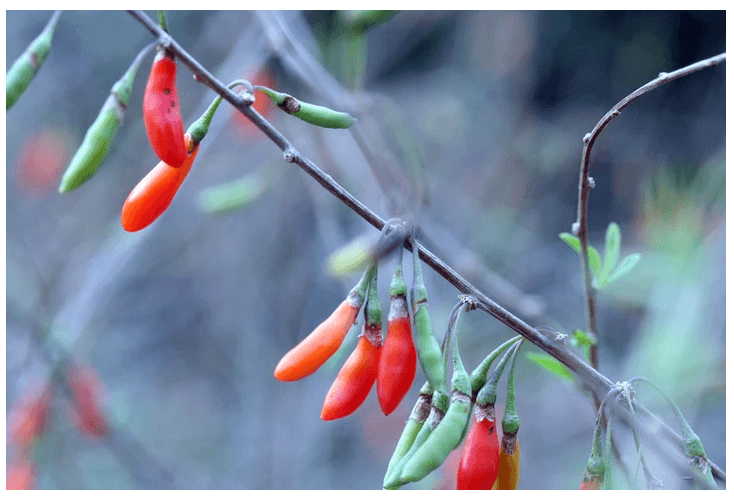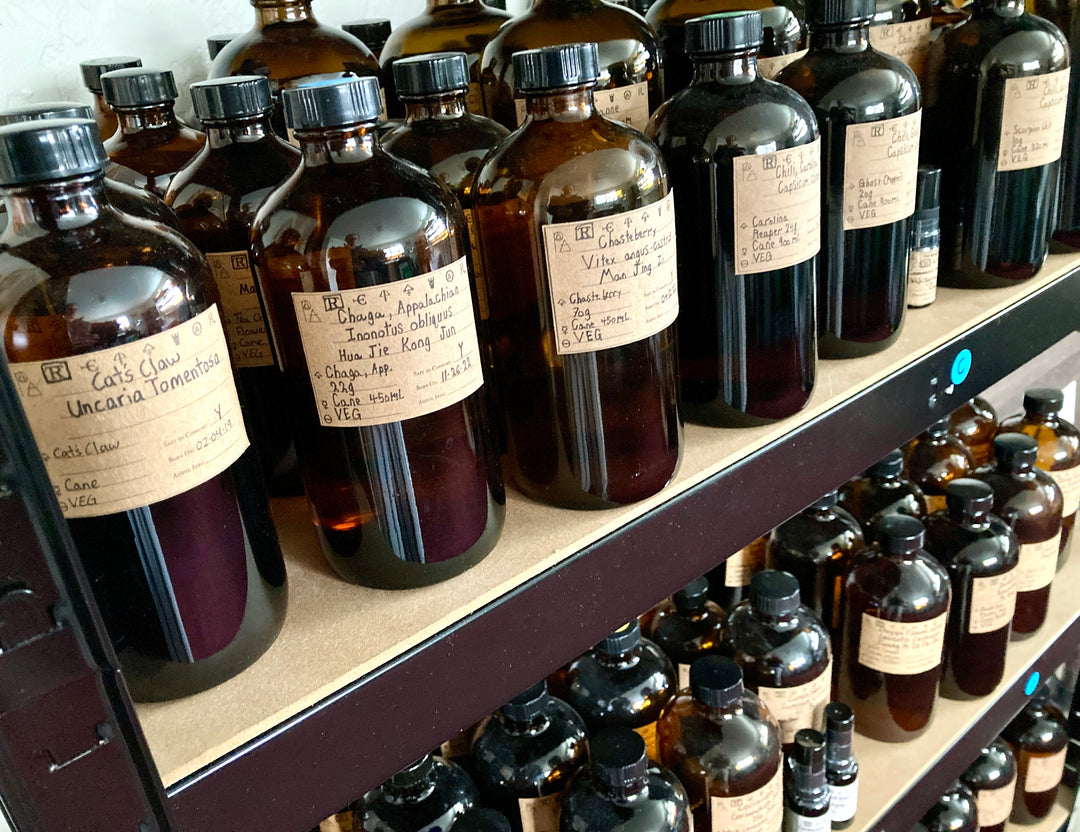 The famed goji berry, prized for its super high nutritional and antioxidant content, comes from either the Lycium barbarum or Lycium chinense bush. Both of these red tear-dropped shaped red berries are slightly different in appearance and sugar content, yet are both considered to be goji berries.
The famed goji berry, prized for its super high nutritional and antioxidant content, comes from either the Lycium barbarum or Lycium chinense bush. Both of these red tear-dropped shaped red berries are slightly different in appearance and sugar content, yet are both considered to be goji berries.
(Lycium chinese to the right)
 (Lycium barbarum to the left)
(Lycium barbarum to the left)
Also known as wolfberry, the goji berry is a sweet, bitter, and tangy fruit found in its native habitat ranging from China to Mongolia to Russia to Thailand, while even some species are found in the deserts of the American West. Where I live, in Utah, goji berry grows abundantly as well. Goji was introduced to Utah's Wasatch Mountain range by Chinese railroad workers in the later part of the 1800's, and has flourished ever since.
As a member of the nightshade family, the goji berry is related to tomatoes, potatoes, eggplant, peppers, ashwagandha, mandrake, and belladonna.
For more than 2,000 years, goji berries have been used in Asia as a traditional medicinal herb and food supplement. Traditional Chinese Medicine has most commonly utilized the berries and bark of both Lycium barbarum and Lycium chinense, although the leaves and shoots are also edible, and the flowers can be used medicinally as well. The use of goji berry was even found recorded in the Shijing, the oldest existing collection of Chinese poetry dating back to the 11th century BC!
If you read my other blog on He Shou Wu, you will recognize the name Prof. Li Ching-Yuen, who was a martial artist, tactical advisor, and tonic herbalist of extreme longevity living to be 256 years of age. His long life was said to be attributed, in part, to consuming goji berries on a daily basis.
Goji berries have a long and rich history of being used medicinally, and rightfully so. These small red berries are packed with powerful antioxidants, proteins, vitamins, and minerals. Studies have shown that consuming regular amounts of goji berries, whether fresh or dried, will significantly increase overall energy levels, focus, sleep quality, digestive health, and a general sense of well-being. Historically, goji berries were also used in order to help treat common health problems such as diabetes, high blood pressure, fevers, and age-related eye problems.
 The nutritional components of goji berry:
The nutritional components of goji berry:-
18 amino acids including the 8 essential amino acids
-
21 trace minerals including zinc, calcium, germanium, selenium and phosphorus
-
One of the highest sources of antioxidants (has anti-aging effects & helps fight cancers)
-
More protein than whole wheat (13 percent)
-
180% of daily recommended Vitamin A intake per 1 ounce serving
-
B vitamins B1, B2, & B6
-
Vitamin E (which is very rare to find in fruits)
-
More Vitamin C per ounce than an orange
-
Contains the anti-inflammatory agent beta-Sitosterol which helps to lower cholesterol
-
Essential fatty acids such as omega 6 linoleic acid that help regulate hormones and promote body fat loss
-
15 times more nutritional iron than spinach
-
Anti-bacterials & anti-fungals : sesquiterpenoids: cyperone and solavetivone
One of the many reasons this red berry makes it on the "Superfood" list, is because of the powerful phytochemicals it contains, including the polysaccharides beta-carotene and zeaxanthin. Beta-carotene is what is responsible for the bright red color of the berry and is also what helps create excellent eye health, bone health, skin health, and cell development. In fact, goji berries have some of the highest beta-carotene levels of any edible plant. Zeaxanthin is a polysaccharide that is critical in helping to support your immune system, and according to many researchers, it can also help to prevent macular degeneration, a progressive vision impairment. Also, due to the zeaxanthin present, goji berries are great at helping improve one's overall eyesight.
Some studies suggest that goji berries can help stabilize blood sugar by balancing the insulin and glucose levels in the blood.
One study found that the polysaccharides present in goji berries helped with improving overall immune function, and helped to increase the total bodily antioxidant activity.
Phoenix Aurelius, the founder of the Phoenix Aurelius Research Academy, turns to goji berry when dealing with clients who have liver or eye issues, as this berry drastically helps improve the health of both of those organs. Phoenix's well-respected Spagyric Formula Prothymia, used to help balance mood and brain chemistry, includes goji berry in its formulation due to its enormous protein and amino acid content. Goji berry grows exceptionally well here in Utah, and it is one of our favorite herbs to harvest. In every home Phoenix and I have lived, we have planted goji berry, or found it growing naturally. Beware that eating fresh goji berries is a whole other story in terms of taste and flavor profile; the fresh berries tend to be much more bitter than the dried ones.
With all that being said about goji berry, I am certainly going to make sure to keep this yummy berry in our kitchen at all times. If you are wanting to incorporate some goji berry into your life, we carry Goji Berry Spagyric Tincture in our Apothecary, and while we can't legally say what it is good for without getting in serious trouble, we hope that you will try it out and tell us what you notice!








